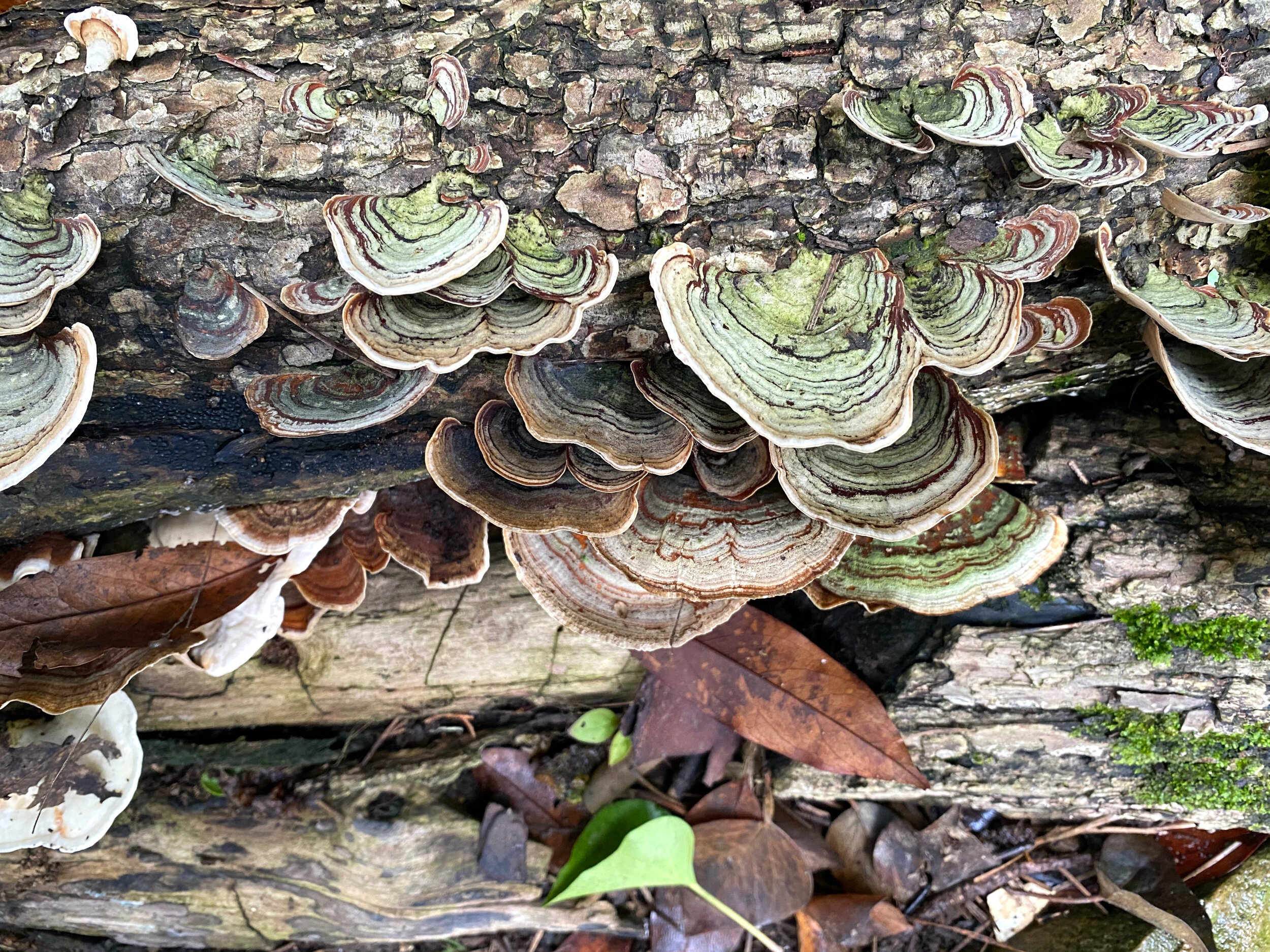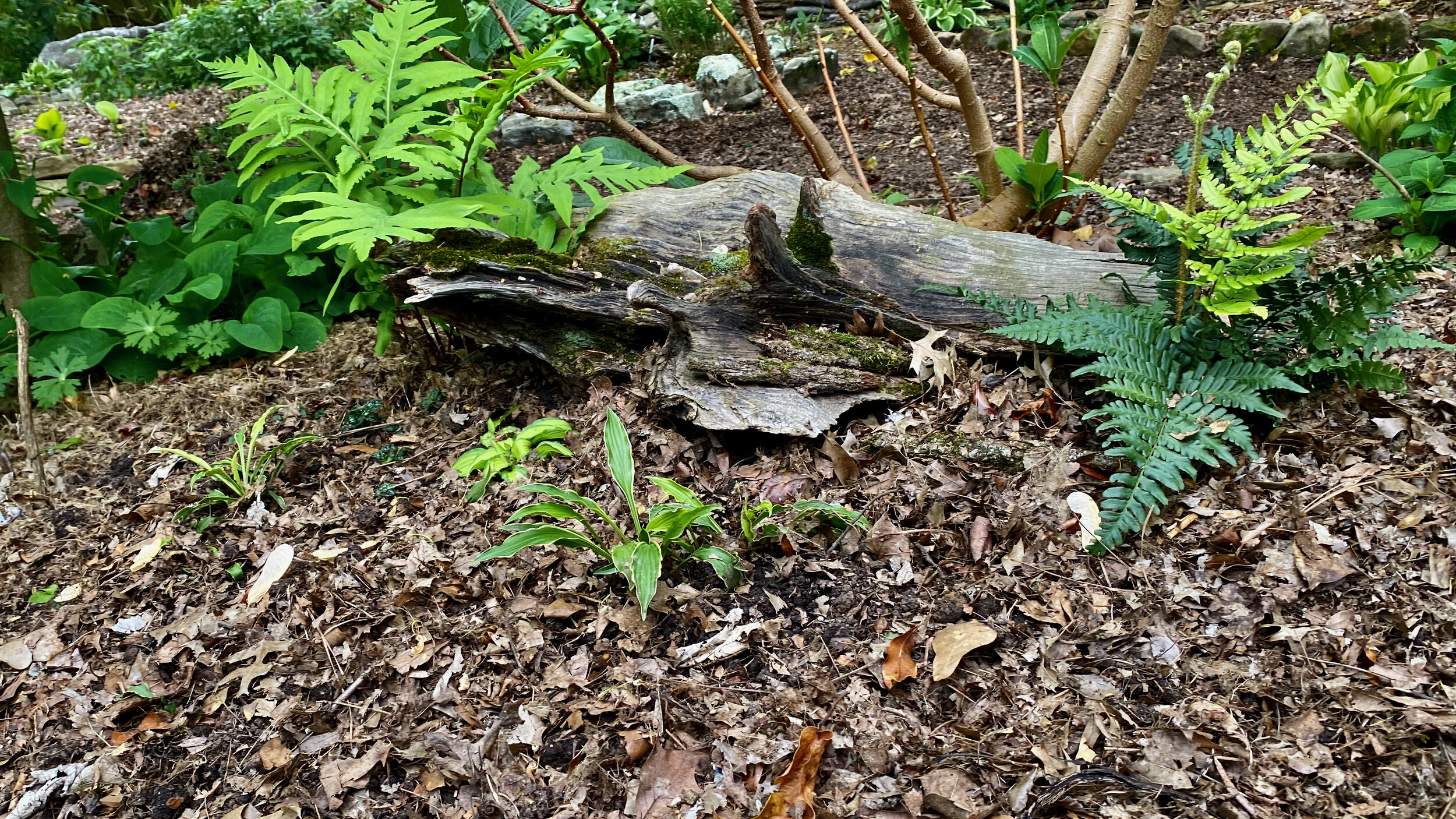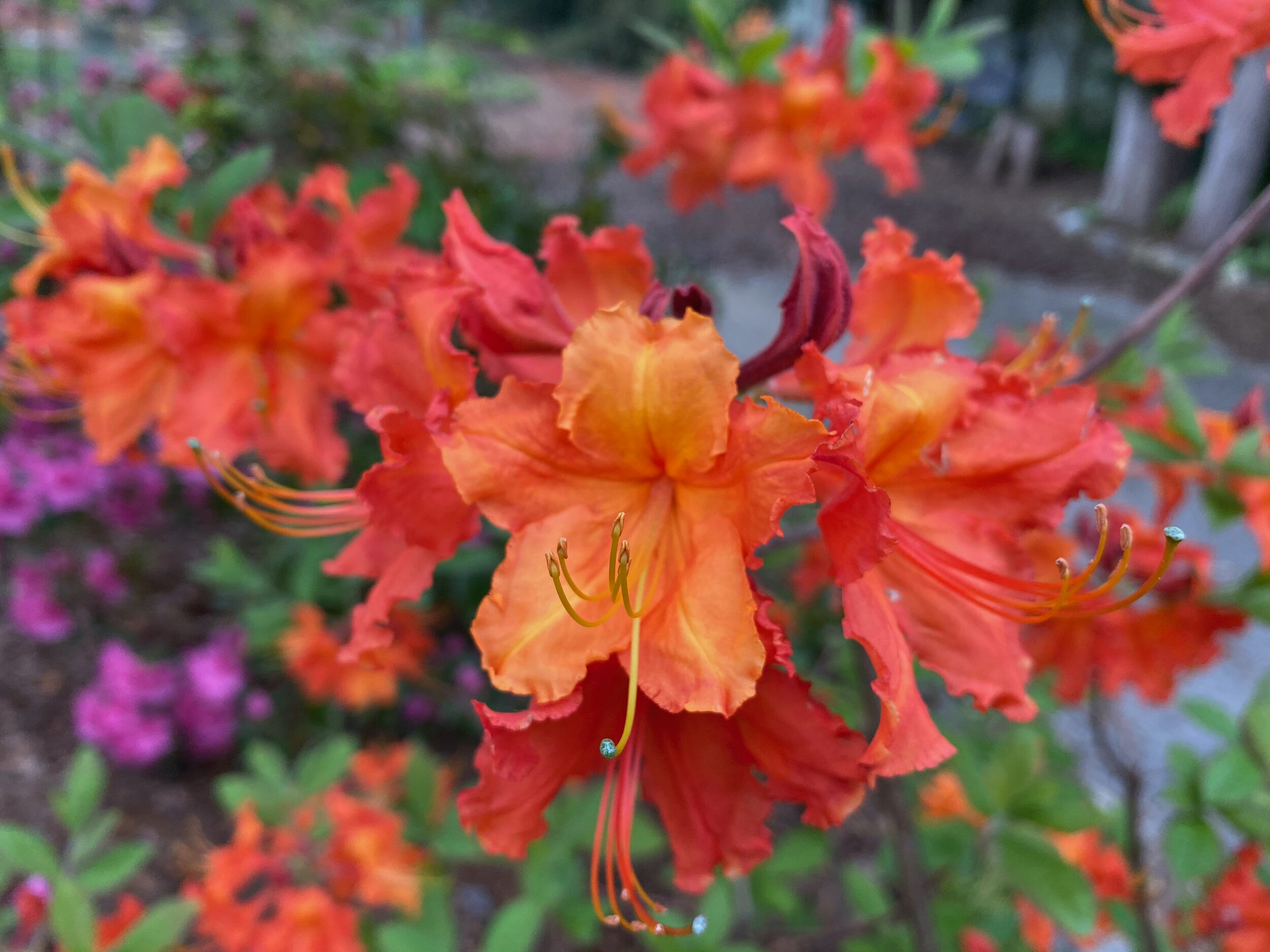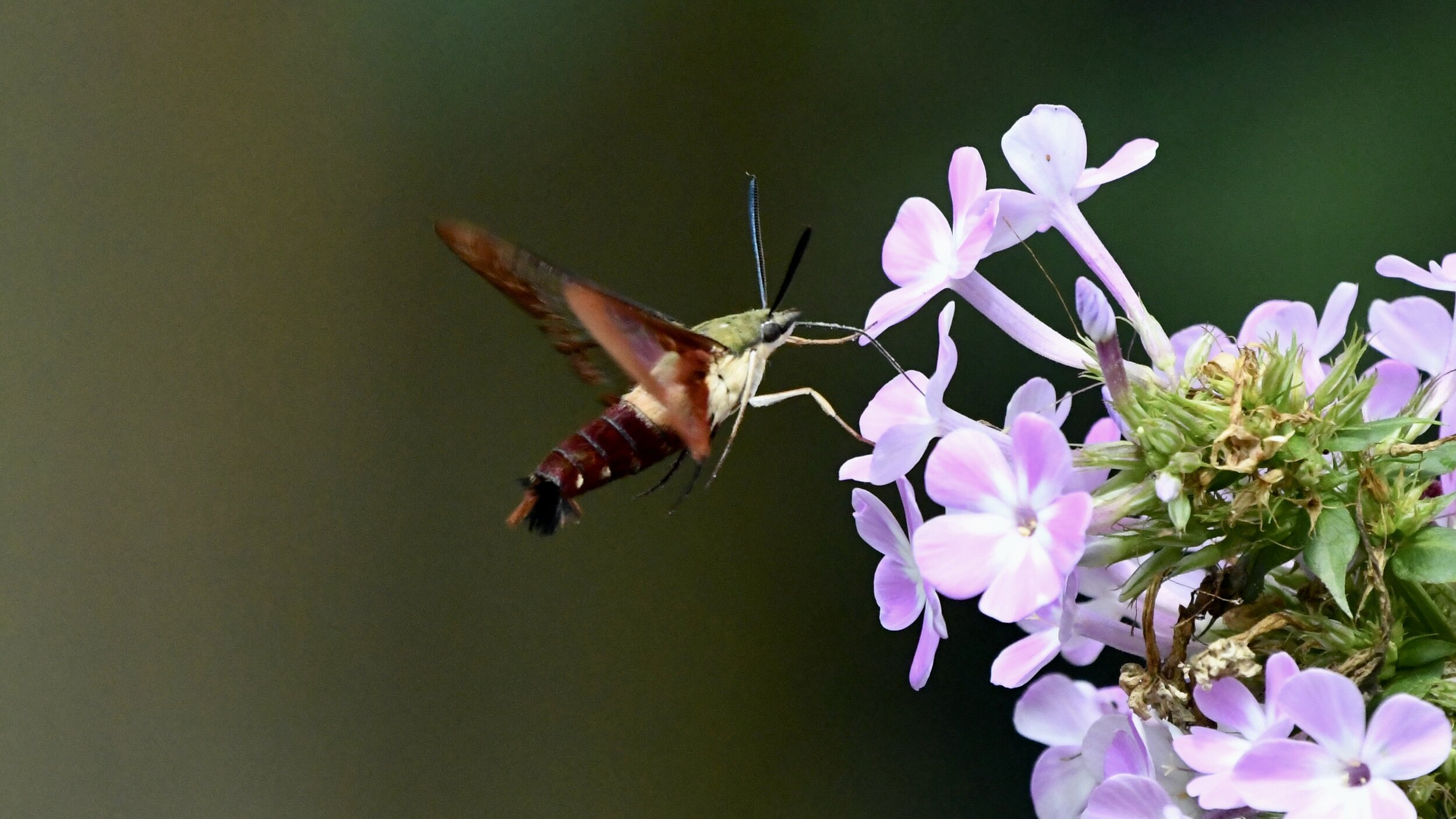The Outback Garden
In April 2015 Terry and I had the good fortune to acquire the residential lot behind our home, and a new garden vision began. Since that time, we have been creating an expanded backyard wildlife habitat and bird sanctuary. The basic design is an oasis of flower beds and meadow islands among the meandering grass pathways making up the central area. This is all surrounded by berms planted with trees and shrubs on the boarders and a shade garden in the back. A major success of the meadow is the attraction of nesting Eastern Bluebirds never seen in our initial backyard garden. A Bubbling Rock water feature positioned at the entrance from our existing backyard is a key element. This feature not only attracts many species of local and migrating birds, but also attracts many night visitors including owls, fox, raccoon, possum, rabbits and coyotes.
The Beginning
A contractor started site preparation in mid July 2015. The morning after site preparation was completed we experienced the first severe flooding rains. On August 6 a five-inch rain storm flooded the lot carrying several truck loads of top soil and pine mulch into the street. Over the next six months several more severe rains occurred. Because the lot is on a slope, over a year’s period major modifications were made to control water erosion including the installation of 400 feet of dry creek beds and over 250 feet of French drains. First plantings in the garden began in April 2016, one year after purchasing the lot. Because of spending so much time developing this new extension to our backyard, every time I’d go outside to work I’d tell Terry I am “going outback”. When we decided to name this new area, it was only logical it be called the Outback Garden.
Dry Creek Beds
Dry creek beds are one obvious feature of the garden I did not expect to incorporate. I totally underestimated the disastrous effect of flowing water over a sloping terrain. Multiple times in the first year, I experienced four to five-inch rains that washed top soil and mulch into the street or turned the meadow into a sloshing bog. I soon discovered my major defense of this natural occurrence was to direct rushing water into rock channels and divert it away from the meadow. This has required installing over 400 feet of dry creek beds and over 250 feet of French drains that now successfully carry flash flooding water into the street without carrying off top soil.
Garden Views
A walk through the garden offers many perspectives for viewing the elements within the garden. The gentle sloping terrain from south to north enhances viewers perception of depth within the garden.
Bubbling Rock Water Feature
The 12-foot diameter, 2-1/2 foot deep Bubbling Rock water feature positioned at the garden entry from my existing backyard is the key attractor of wildlife. The water pool is accented with various container plants placed within the gravel bed. Pieces of dead limbs positioned behind the rock provide inviting perches for birds. The flat surface of the rock provides a bird’s access to safe drinking while the water pool below the rock is more attractive to bathing. The total water feature is clearly visible from my sun room thus providing many opportunities to photograph the beauty of birds and their behavior with my telephoto lens.
Birds in the Bubbling Rock
Water is the magic element in any habitat for attracting wildlife. The total combination of dynamic water flowing into a shallow pool surrounded by small trees, dead limbs and water vegetation provides a superior attractor of wildlife. The dynamic water and large pool have attracted over 30 bird species often in large numbers and is especially attractive to migrating birds. A night viewing security class camera has greatly aided the detection and recording of visitors in daylight and at night.
Meadow Flowers
The central garden displays multiple mini-meadows populated with native shrubs and flowers attracting pollinating insects and butterflies throughout the spring, summer and fall seasons. Many birds forage for insects within the foliage and finches seek out seeds on the dried flower heads.
Shade Garden
Stone-lined winding pathways weave through beds of understory plants and groundcovers. Many varieties of wild flowers begin blooming early Spring and as temperatures warm varieties of ferns rise and unfold into delicate mounds accenting blooming flowers. Strategically placed decomposing logs display their moss and lichen wardrobes. Following a rain, the smell of decaying leaves and wood permeate the air providing an abundant source of insects, larva and earthworms that become a bird’s buffet. The Shade Garden is my resting place sitting on a bench overlooking the meadow.
Azalea Displays
A variety of native and cultivated azaleas are displayed throughout the garden. The multi-colored/ blooms highlight the arrival of Spring.
Nesting Birds
Attracting nesting Eastern Bluebirds was a major goal of designing a meadow environment. I have been rewarded every year with bluebird families nesting in the meadow. Most often producing three broods of young birds each season. Nest boxes have also attracted nesting House Wrens, while the maturing shrubs and trees provide nest sites for Northern Mockingbirds and American Robins. A nest box installed to attract Screech Owls has only attracted a pair of Great Crested Flycatchers.
Birds Feeding in the Meadow
Hummingbirds favor the nectar producing flowers, while American Goldfinches feed on drying flower seeds. Mockingbirds, Eastern Towhees and Brown Thrasher search among meadow plants for insects. American Robins hunt for earthworms under the leaf mulch, while Eastern Bluebirds, Common Grackles and European Starlings catch insects in the grass pathways.
Butterflies and Insects
A wide variety of butterflies visit during the summer and fall. Also, closer observation reveals many varieties of insects. Observing these creatures of nature has greatly enhanced the enjoyment of my bird sanctuary.















































































































































































